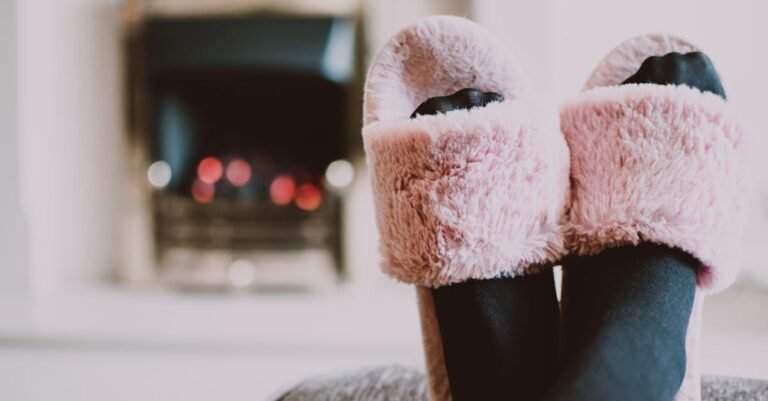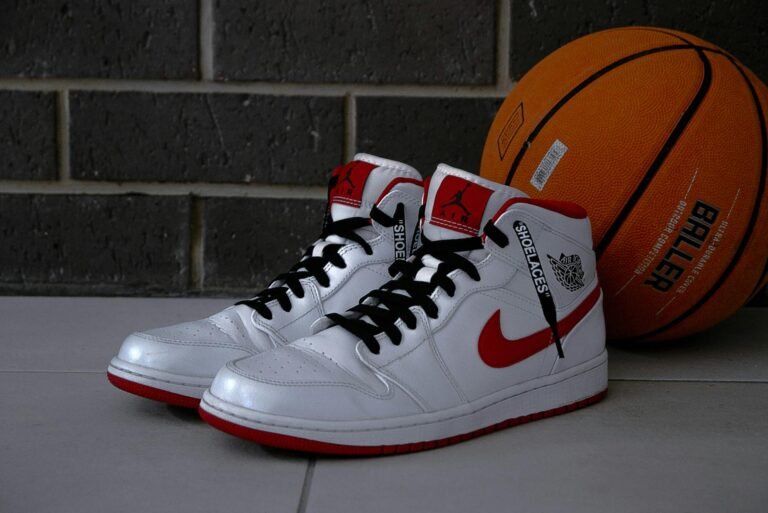Stop Shoe Dye Stains: Protect Your Feet Effectively
Ever found yourself with a favorite pair of dyed shoes that leave their mark on more than just your fashion statement? I’m talking about those pesky dye stains on your feet that seem to hold on as tightly as your love for the shoes themselves. It’s a common annoyance, but don’t worry, I’ve got you covered with some tried-and-true solutions to keep your feet stain-free.
Understanding the Problem: Why do shoe dyes stain your feet?
When I slip into a pair of new shoes, the last thing I want to see after taking them off is stained feet. It’s important to understand why shoe dyes transfer to the skin to better address the issue. The main culprit behind this messy problem is poor dye fixation. During the manufacturing process, shoes are often colored with dyes that, when not properly fixed to the material, can dislodge and seep onto your skin, especially when moisture is present.
Foot sweat is a major factor that exacerbates this issue. The combination of heat, moisture, and friction when you walk creates the perfect environment for dye transfer. Leather and fabric shoes, especially those with rich, dark colors, are more prone to this issue because they contain excess dye that can dissolve in the presence of sweat and rub off onto your feet.
But it’s not just the shoes; chemical reactions also contribute to the staining. The natural pH of your skin can react with the dye, making it more likely to leave unwanted marks. Additionally, the use of certain lotions or foot care products can breakdown the dye’s bond to the shoe, further encouraging stains.
To mitigate the problem, manufacturers seal the dye within the shoe material. However, cost-saving measures or rushed production can lead to shortcuts, resulting in insufficient sealing. This is why even high-quality shoes aren’t immune to the staining dilemma.
Wearing your dyed shoes in wet conditions or during rigorous physical activity can increase the likelihood of staining. It’s clear that the interplay between production shortcuts, physical activity, and the chemistry of our skin can turn stylish footwear into a source of frustration. By recognizing these factors, I can better equip myself to tackle the staining head-on and find practical solutions to keep my feet spotless.
Preparing Your Shoes: Steps to Take Before Wearing Them
Before slipping into a new pair of dyed shoes, it’s essential to prep them to avoid staining your feet. I’ve got a few tried-and-true steps to make sure your shoes are ready to wear without the hassle of dye transfer.
Firstly, treat your shoes with a quality water repellent spray. This creates a barrier that repels moisture, a key culprit in dye bleeding. Make sure to cover every inch of your shoes and let them dry thoroughly before wearing them. Reapplying the spray every few weeks can help maintain this protective layer.
Next, consider lining the inside of your shoes. Cut-to-fit liners not only provide an extra layer between your feet and the dye, but they also enhance comfort. There are different linings you can use:
- Pre-made shoe inserts
- DIY cutouts from cotton fabric
- Specialized shoe lining products
Thirdly, conditioning the leather is an absolute must if your dyed shoes are made of this material. Leather conditioners help to lock in the dye and keep the leather supple, reducing the likelihood of dye transfer. Apply a generous amount of conditioner to a soft cloth and work it into the shoe, repeating this step every few months to keep the leather in good condition.
Lastly, check for any loose dye by wiping the inside of the shoe with a damp white cloth. If the cloth picks up color, it’s a sign that the dye hasn’t been fixed properly, and you might want to repeat the moisture-repellent treatment or use a professional dye fixative.
By taking these steps, you’ll minimize the chances of experiencing dye stains on your feet. It’s crucial to give your shoes the care they need right off the bat. Good shoe maintenance not only prevents staining but also extends the life of your favorite pairs. Keep in mind, even with all these precautions, there might be instances where some dye transfer could occur, especially under conditions such as high heat or extended wear. Being proactive about your shoe care routine is always the best defense against unwelcome color on your skin.
Priming Your Feet: How to Prepare Your Skin for Dyed Shoes
Before slipping into a pair of freshly dyed shoes, it’s crucial to give your feet the right attention. Preparation is key to ensuring your feet remain unstained and comfortable throughout the day.
Start by cleansing your feet thoroughly with soap and water to remove any oils and dead skin that could interact with the dye. Dry them completely to set a good base for further protective measures. Then, consider applying a clear, unscented antiperspirant to the bottoms of your feet and around the edges where the shoe makes the most contact. This helps create a barrier that can minimize sweating – a major contributor to dye transfer.
Moisturizing your feet can form an additional protective layer between your skin and the shoe dye. Use a high-quality, non-comedogenic moisturizer that’s free from artificial colors or fragrances which could react with the shoe dye.
For an extra layer of security, specially designed pre-treatment sprays that create a barrier on the skin are available in the market. These sprays are formulated to prevent staining and are a great investment if you regularly wear dyed footwear. Apply the spray according to the instructions on the packaging, allowing it to fully dry before wearing your shoes.
If you’ll be on your feet for an extended period, it might be worth wearing a thin pair of moisture-wicking socks that can absorb the sweat without becoming bulky. Opt for socks with synthetic fibers designed for athletes, as they’ll offer the best protection against both sweat and dye transfer.
Remember, feet that are well-cared-for are less likely to absorb stains. Regular pedicures and exfoliation will keep the skin on your feet in prime condition, reducing the chances of dye soaking into your skin. Additionally, trimming your toenails prevents the dye from lodging underneath and causing long-term staining.
Integrating these simple steps into your routine will make you more confident in your dyed shoes and ensure that your feet remain as pristine as your style.
Applying a Barrier: Products to Prevent Shoe Dye Stains on Your Feet
When it comes to guarding my feet against unsightly shoe dye stains, I’ve learned that the right products can make all the difference. Barrier creams, essentially invisible shields, are my go-to for creating a protective layer on the skin. These creams are designed to block the dye from coming into contact with my feet, acting as a preventative measure.
I recommend opting for products that are specifically formulated for this purpose. Here are a few that I’ve found effective:
- Silicone-based creams: These create a thin, waterproof barrier that’s durable yet comfortable on the skin.
- Petroleum jelly: A tried-and-true method that provides a formidable layer against dye transfer.
- Specialized foot balms: Some balms are created to prevent blisters, but they also work wonders for keeping dye at bay.
When applying any of these products, I make sure to cover all areas of my feet that might touch the shoe’s interior. It’s crucial to let the barrier cream dry or set before slipping my feet into the shoes to ensure the protective layer is effective.
In addition to creams, pre-treatment sprays developed for shoes can provide an extra level of protection. These sprays are applied directly to the interior of the shoe and need time to dry. They work by sealing the dye within the shoe fabric. Brands like Kiwi and Scotchgard offer sprays that not only help with dye staining but also repel water and dirt, keeping the shoes looking new for longer.
Here’s a quick breakdown of the types of products you can use:
| Type | Pros | Application | Drying Time |
|---|---|---|---|
| Silicone-based creams | Waterproof, Comfortable | Skin | Varies |
| Petroleum jelly | Strong barrier | Skin | Immediate |
| Specialized foot balms | Dual-purpose (blisters and dye) | Skin | Varies |
| Pre-treatment sprays | Seals in dye, Repels water/dirt | Shoe interior | As indicated on product |
It’s all about finding the right balance for personal comfort and stain prevention. Remember, regular application may be necessary, especially if I’ll be wearing the dyed shoes frequently.
Consistent use of these products, together with maintaining a diligent foot care routine, allows me to step out confidently, knowing my feet will stay as pristine as my carefully curated look.
Natural Remedies: DIY Solutions for Preventing Stains
Sometimes, the best solutions are homemade ones, and when it comes to preventing shoe dye from staining my feet, I’ve discovered a few DIY tricks that work wonders. For those who prefer natural remedies, or simply love crafting their own solutions, this is for you.
Firstly, talcum powder is a go-to for me. It’s easily available and can be applied directly inside the shoes. Talcum powder not only absorbs excess moisture but can also act as a barrier between my skin and the shoe dye, reducing the risk of stains. I just sprinkle a generous amount before slipping my feet in.
Another personal favorite is using cornstarch as a natural moisture absorbent. Similar to talcum powder, cornstarch can soak up the sweat, thus preventing the dye from bleeding. I’ve found that a thin layer inside the shoes can do the trick.
For an extra layer of protection, I’ve also turned to creating a homemade foot powder. I blend cornstarch with baking soda and a few drops of essential oil for a refreshing scent. This not only helps keep my feet dry but also ensures they stay fresh throughout the day.
Taking inspiration from natural skincare, coconut oil can also be a savior. I apply a thin layer to my feet before wearing dyed shoes. It creates a natural barrier and the added bonus is the nourishing effect it has on my skin.
- Pre-treatment Options:
- Talcum powder sprinkled inside shoes
- Cornstarch layer for moisture absorption
- Homemade foot powder with baking soda and essential oils
- Thin coconut oil layer as a natural barrier
Each of these natural remedies has proven effective for me and they might just be the solution you’re looking for to keep your feet stain-free without relying on chemical laden products. Plus, they’re cost-effective and utilize ingredients that you likely already have in your home.
Conclusion
Tackling the issue of shoe dye staining your feet doesn’t have to be a hassle. With the right preventative measures, you can keep your feet stain-free and comfortable. I’ve shared some tried-and-true methods, from priming your feet with antiperspirant to sealing the dye with pre-treatment sprays. Remember, regular foot care is key to maintaining the effectiveness of these solutions. Don’t underestimate the power of natural remedies either—they’re simple, affordable, and can be surprisingly effective. Stick to this routine, and you’ll enjoy wearing your favorite dyed shoes without the worry of unsightly stains.












